Abstract
Daytime incontinence is a major problem for retarded children. A training procedure for eliminating this problem should be facilitated by an apparatus that provided the trainer with an immediate signal when the child voided so that the trainer could react immediately. Two apparatuses were developed for this purpose: a toilet-chair apparatus to signal proper toileting and a portable pants-alarm apparatus to signal wetting of the pants. A reprimand was given when pants wetting occurred whereas positive reinforcement was given for proper toileting. Results with four profoundly retarded children indicated the reliability of the apparatuses in practice and the effectiveness of a toilet training program that used the two apparatuses.
Full text
PDF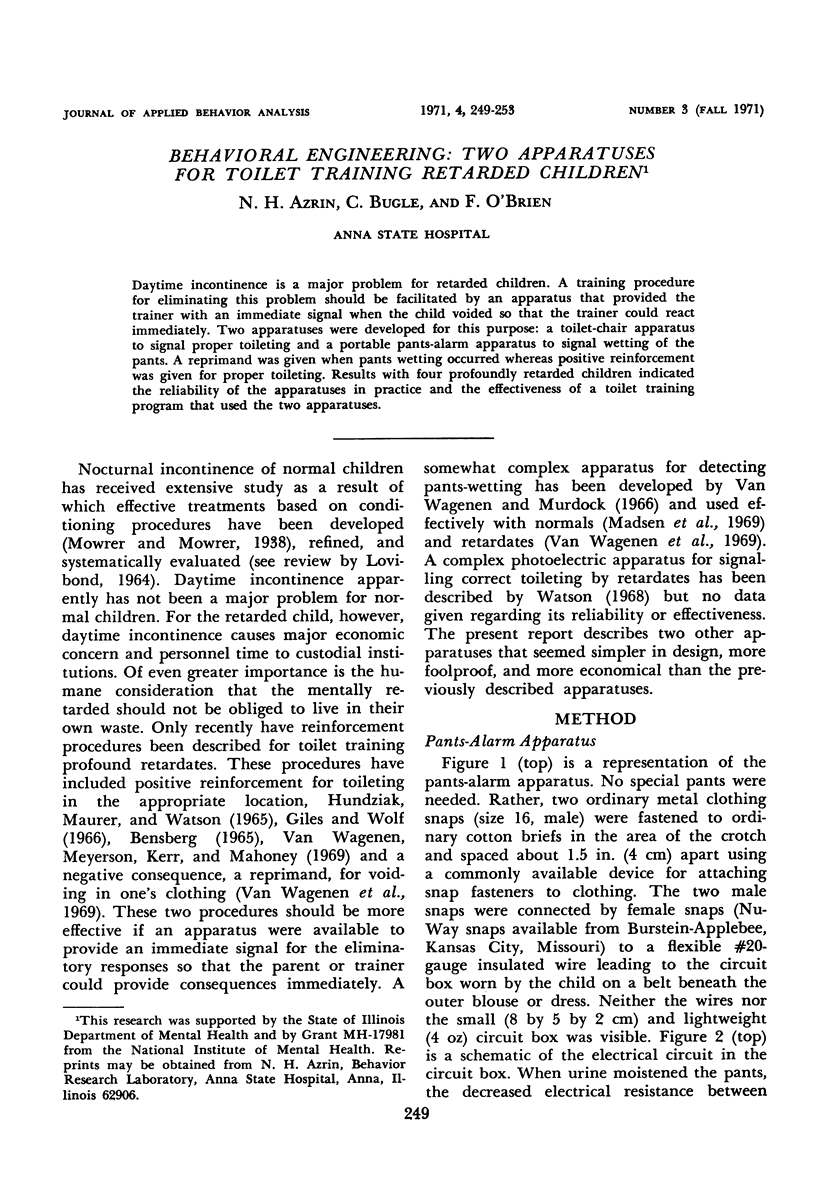
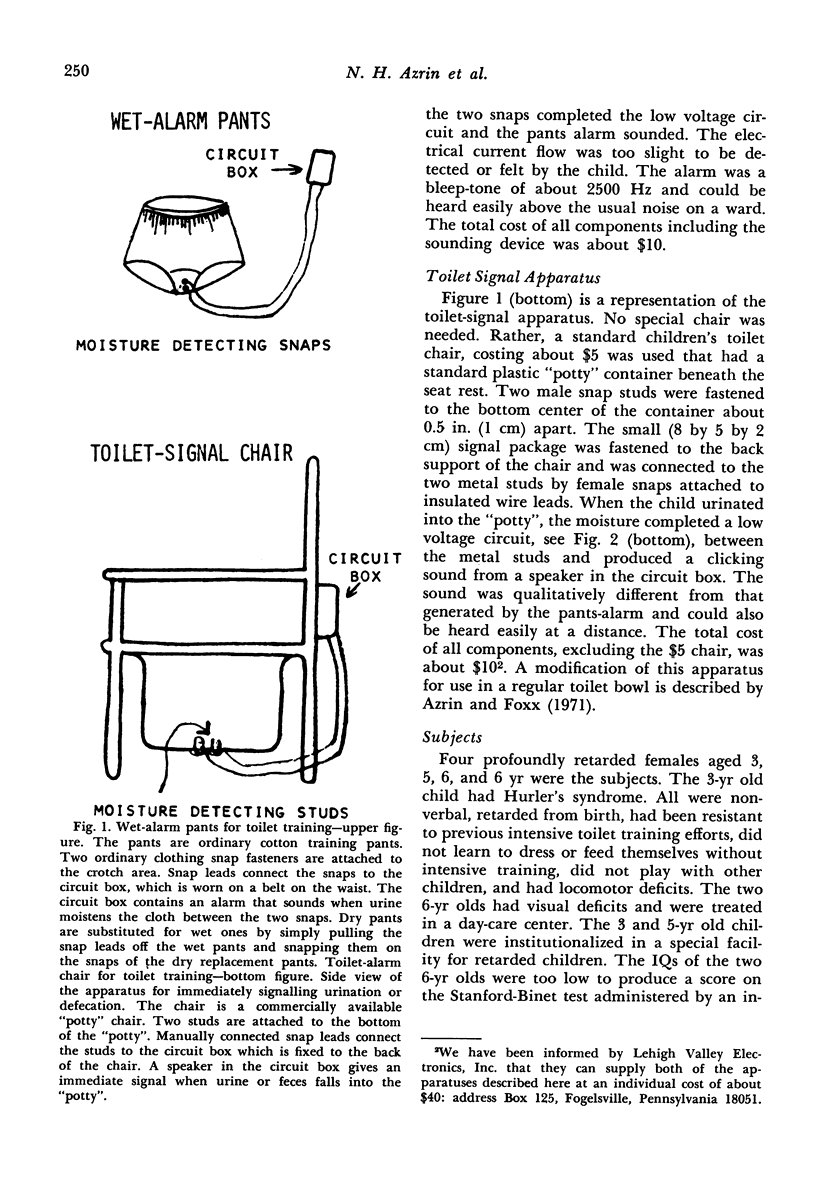
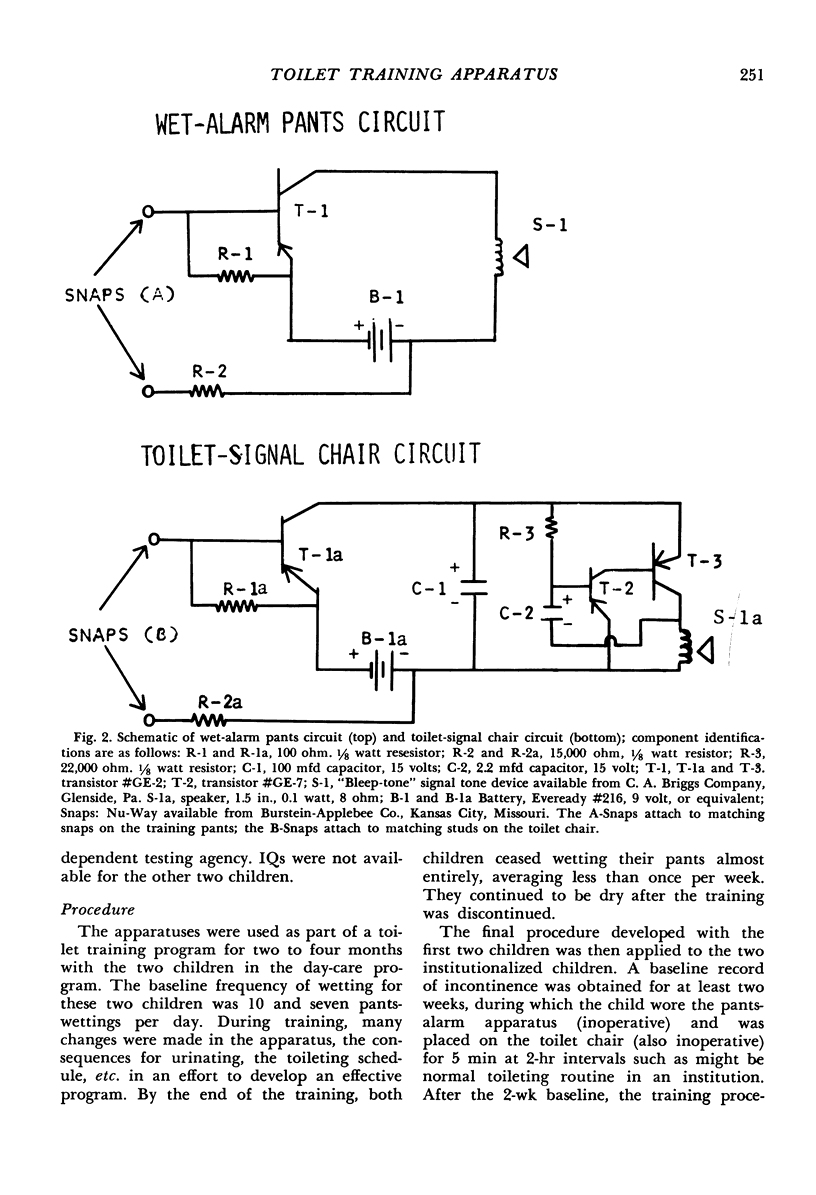
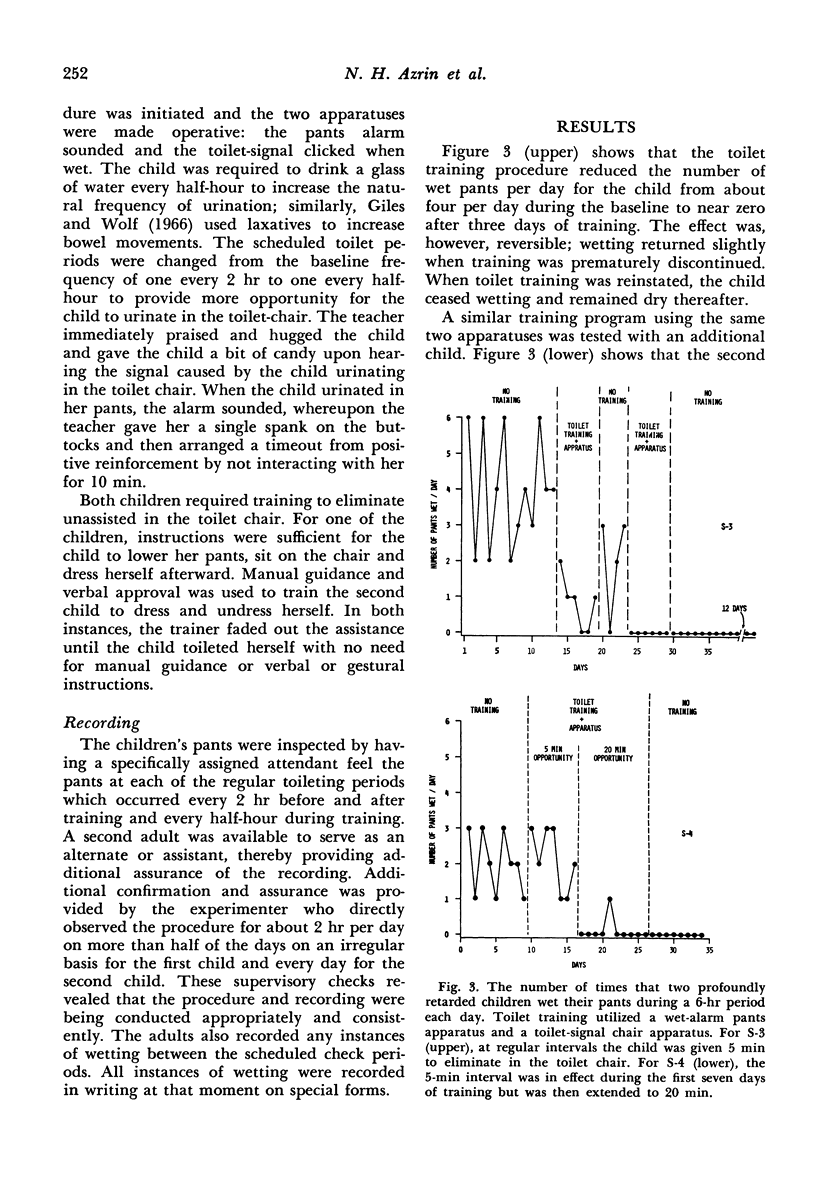
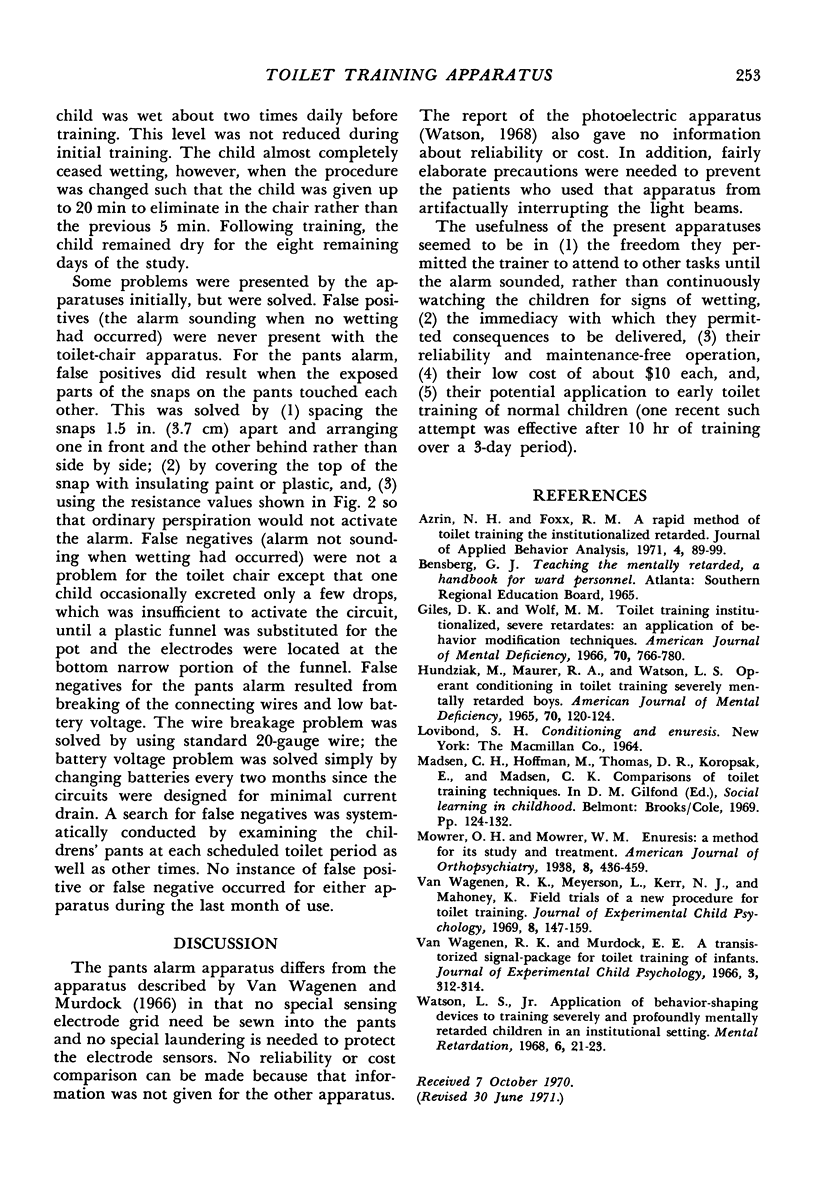
Selected References
These references are in PubMed. This may not be the complete list of references from this article.
- Azrin N. H., Foxx R. M. A rapid method of toilet training the institutionalized retarded. J Appl Behav Anal. 1971 Summer;4(2):89–99. doi: 10.1901/jaba.1971.4-89. [DOI] [PMC free article] [PubMed] [Google Scholar]
- Giles D. K., Wolf M. M. Toilet training institutionalized, severe retardates: an application of operant behavior modification techniques. Am J Ment Defic. 1966 Mar;70(5):766–780. [PubMed] [Google Scholar]
- Hundziak M., Maurer R. A., Watson L. S. Operant conditioning in toilet training of severely mentally retarded boys. Am J Ment Defic. 1965 Jul;70(1):120–124. [PubMed] [Google Scholar]
- Van Wagenen R. K., Meyerson L., Kerr N. J., Mahoney K. Field trials of a new procedure for toilet training. J Exp Child Psychol. 1969 Aug;8(1):147–159. doi: 10.1016/0022-0965(69)90036-8. [DOI] [PubMed] [Google Scholar]
- Watson L. S., Jr Applications of behavior-shaping devices to training severely and profoundly mentally retarded children in an institutional setting. Ment Retard. 1968 Dec;6(6):21–23. [PubMed] [Google Scholar]


